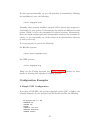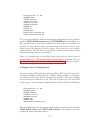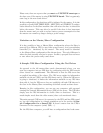or the equivalent for your system. If you are running on Linux and using the
fork()ing version of apcupsd, you should something similar to the following
output.
4492 ? S 0:00 apcmain -f /etc/apcupsd/apcupsd.conf
4496 ? S 0:00 \_ apcser -f /etc/apcupsd/apcupsd.conf
4497 ? S 0:00 \_ apcnis -f /etc/apcupsd/apcupsd.conf
This indicates that apcupsd is up and running and has started the two
(default) child processes. If you are running with the pthreaded version,
now the default, and 2.4.x kernels, you will still see the three processes (see
below). However, under 2.6.x kernels, the threads do not have independent
process ids so everything will be compressed into a single ps line.
apcmain is the main program that waits until it receives a termination
signal (SIGTERM) or one of the child processes dies.
apcser is the process that manages the serial port and takes any actions
(generates events) that are necessary as a result of a change of state
of the UPS.
apcnis is the Network information server process that provides EVENTS
and STATUS information over the network. This information is used
by the CGI programs.
If you are running on a non-Linux system, or using pthreads on a Linux
system (recommended), your output will probably not show the names of
the processes and will appear more like the following:
632 ? S 0:00 /sbin/apcupsd -f /etc/apcupsd/apcupsd.conf
841 ? S 0:00 \_ /sbin/apcupsd -f /etc/apcupsd/apcupsd.conf
842 ? S 0:00 \_ /sbin/apcupsd -f /etc/apcupsd/apcupsd.conf
If you see only one instance of apcupsd running, don’t worry about it as this
is normal on most non-Linux systems, and on Linux 2.6.x kernels.
If you do not find that apcupsd is in the above list, the most likely problem
is a configuration file glitch. If no messages were printed, you should check
your system log (normally /var/log/messages where you will find one or
messages indicating the nature of the problem.
59


















